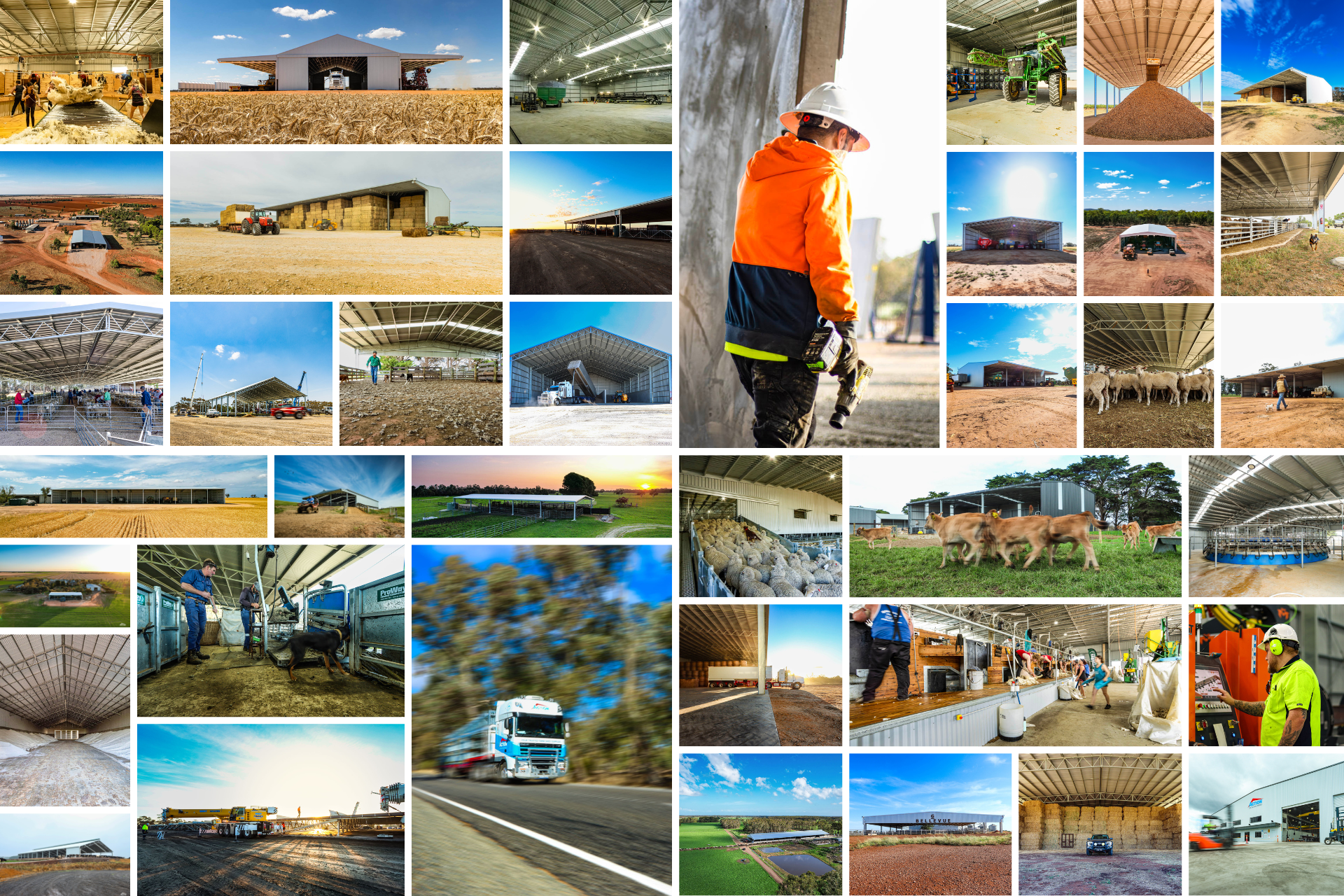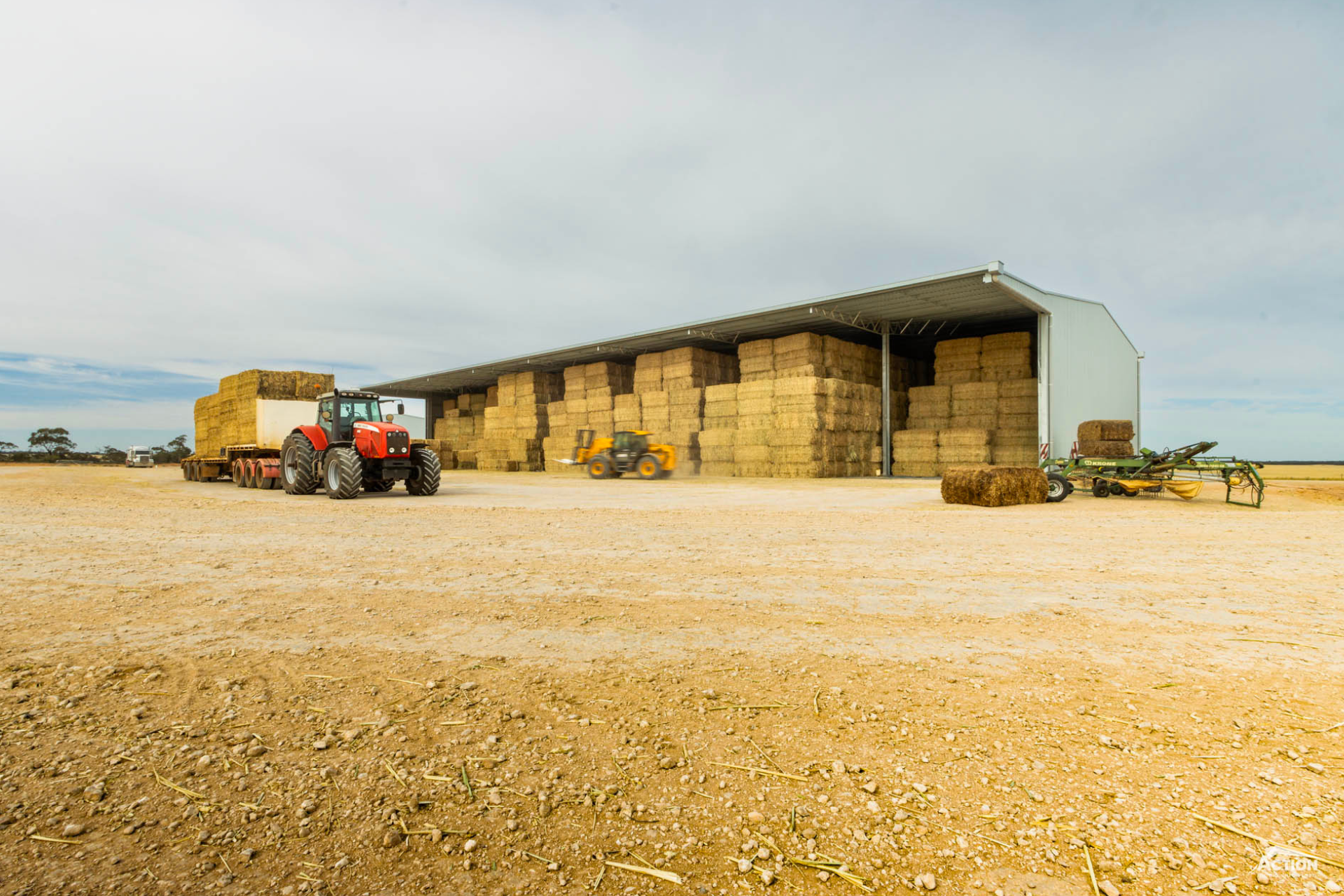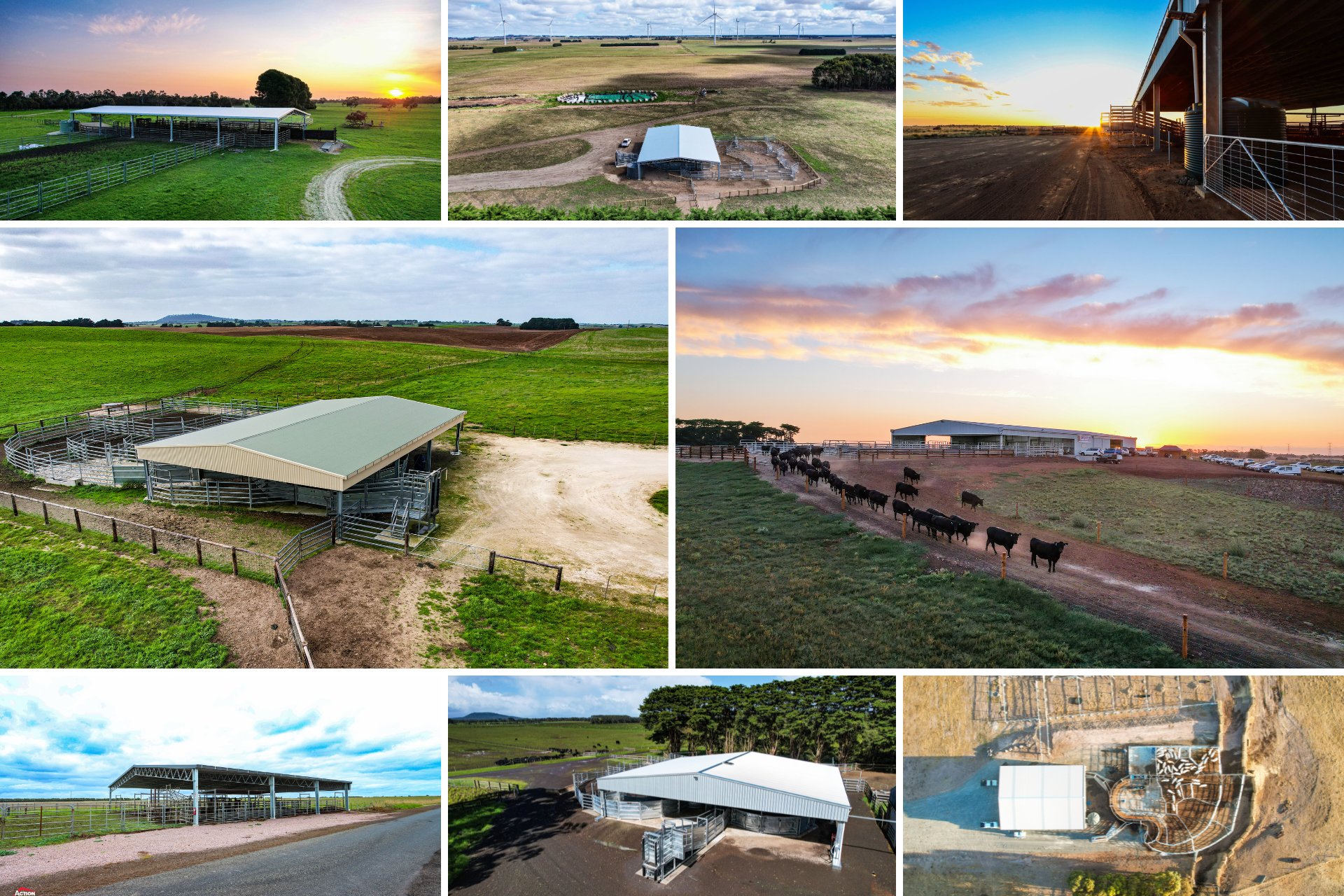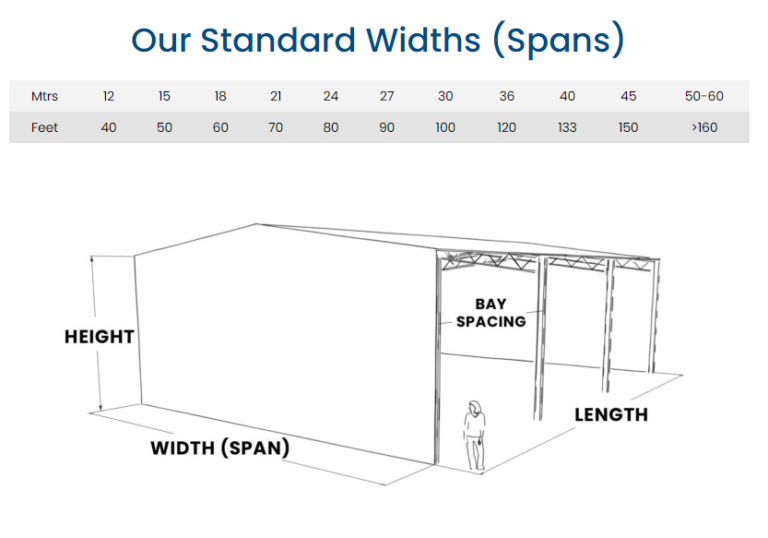Versatile farm shed designs are a winner!
Over the past twelve to eighteen months, multi-purpose farm sheds like open-front machinery sheds with enclosed bays or a hay shed with concrete panels have become popular projects.
Multi-use farm sheds are popular for several reasons, including helping you to get the best value for your money.
For John Bennett, engaging Action to build an open-front hay shed with concrete panels and a concrete slab has achieved two main objectives.
1. Increased storage capacity at harvest for hay and grain.
2. Provided a versatile storage option throughout the year for fertiliser, hay or machinery.
John credits much of the project’s success to the thorough consultation process and faultless execution.
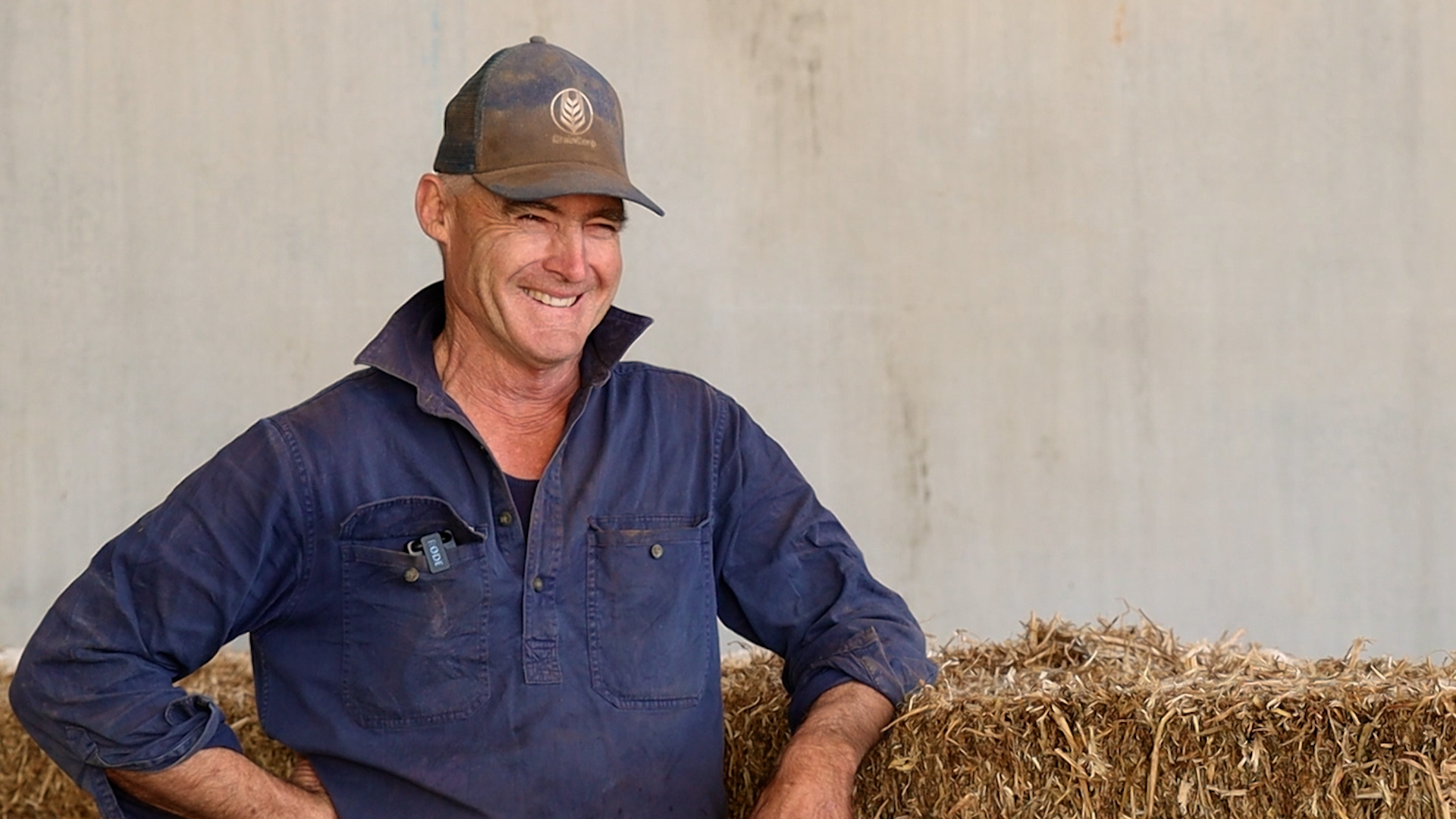
Read on to learn about the process and project in detail, including a project price guide and photo gallery.
Project Overview
Client: John Bennett
Size: 48m (L) x 24m (W) x 8.25m (H) with 3 metre concrete panels to the eastern gable end and two rear bay walls.
Capacity: Stores approx. 600 – 700 tonnes of grain or fertiliser (depending on the type of product being stored) or 2,700 big square bales.
Location: Tulkara VIC
Build Date: 2024
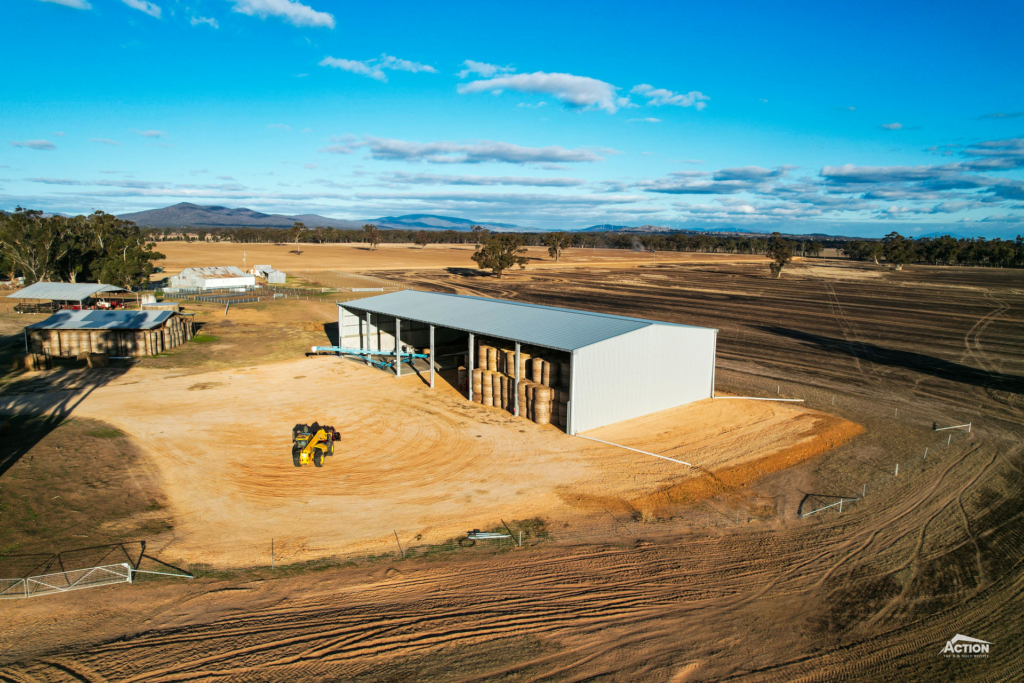
John Bennett On His Hay Shed With Concrete Panels
We recently chatted with John to learn more about his farming operation and his experience with Action.
“Well, having built 2 or 3 sheds in the last eight years…this has absolutely been the best experience out of those sheds.”
Project Details
Like every farm shed project, the details are important for multi-purpose farm shed design.
This is true whether it is incorporating covered yards in a shearing shed complex, or in this case designing a hay shed with concrete panels.
There are several stand-out details of this project design and planning process. We discuss three of these below.
1. Using Standard Sizes
One of the main advantages of using standard span sizes and bay spacings is that they are tried and tested.
They are cost-effective and functional and don’t compromise on quality.
John took advantage of these benefits by using both 8-metre bay spacings and a standard 24-metre span.
8 metre bay spacings are a practical option as they allow three big squares to be stacked between each column.
The 24-metre span is our most common span size for hay sheds, and this is because it usually works out to be the most cost-effective to build.
A 24-metre span also works well with cantilevered canopies and John’s shed design includes provision for adding an 8-metre-wide canopy in the future.
This will provide a combined 32-metre-wide coverage and is a smart way to increase the versatility of the shed. For example, this would provide coverage for a B-double.

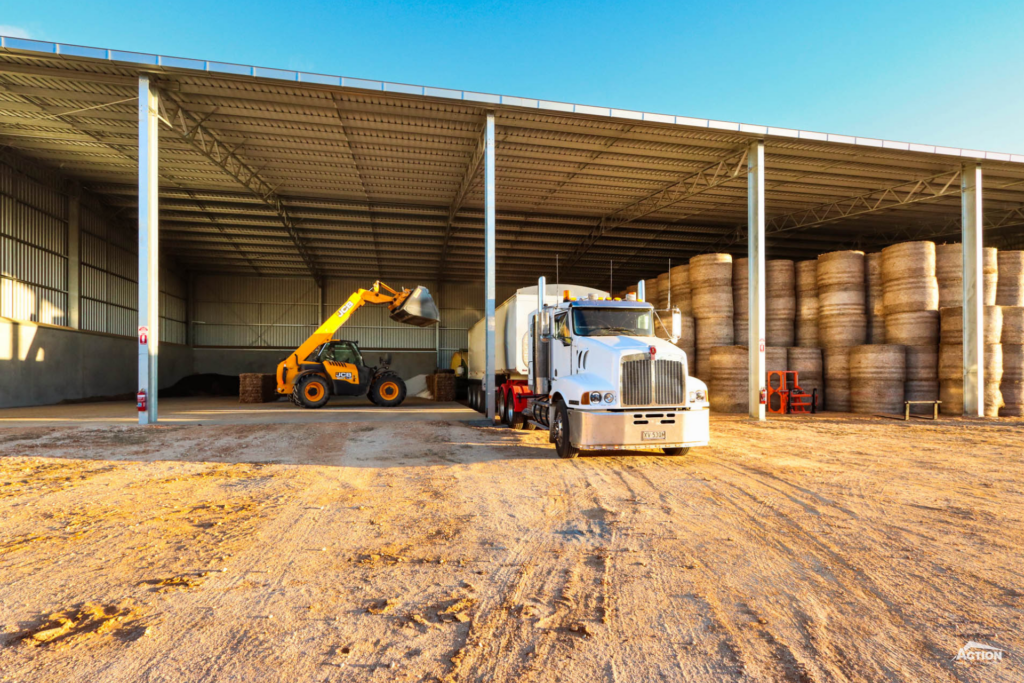
2. Designing For Versatility
Versatility is obviously key to achieving a multipurpose farm shed design, and there are several ways it is achieved with this project.
Firstly, an open-front configuration is a great place to start. This is suited to hay storage, machinery storage and short-term grain or fertiliser storage. This configuration can also be customised in the future with a cantilevered canopy or an enclosed bay.
Arguably the most important design detail is the inclusion of concrete panel walls and a concrete slab. This allows the shed to be used for effective grain or fertiliser storage, without losing the ability to store hay or machinery.
The concrete panels protect the cladding from machinery damage when loading and unloading and from corrosion when storing fertiliser.
The concrete slab is also an excellent addition as it makes it much more straightforward to load and unload the shed and to keep the shed clean. Shed hygiene and cleanliness are important considerations for a multi-use shed!
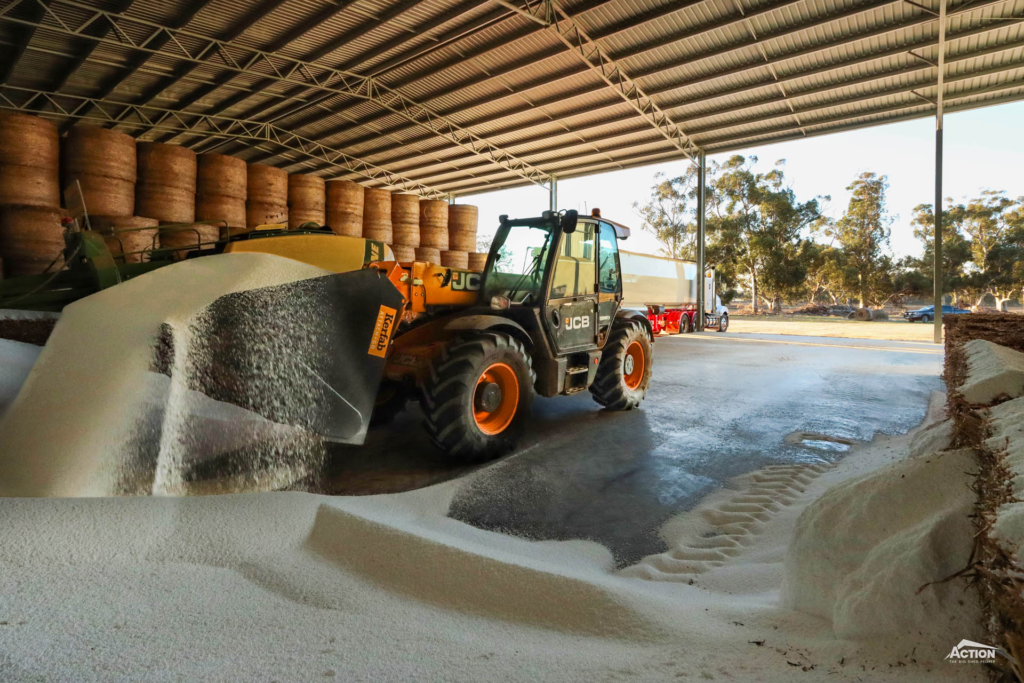
Finally, an often-overlooked shed design detail is the height of the shed. A lack of clearance height can be incredibly frustrating, and it is very difficult to change once the shed has been installed.
This project uses a height of 8.25 metres to accommodate tipping inside the shed. This height also allows big square hay bales to be stacked eight high comfortably and ensures that there will still be adequate clearance height when the canopy is added.
3. Taking Advantage Of Action’s In-House Capability
As he mentions in the video, John took full advantage of the in-house capabilities that we offer at Action.
This included a thorough and straightforward project consultation to accommodate design changes and address safety requirements with Sam Pritchard of People In Paddocks.
The team at Action also provided complete project management, including:
- Council permit applications
- Shed manufacturing, delivery and installation.
- Concrete panel manufacturing. delivery and installation
- Coordinated engineered concrete slab.
The end result? A hassle-free experience for John and a quality shed build with every detail addressed.
Check out the gallery below for a closer look at these details.
Project Gallery
Project Price Guide
If you are considering building a hay shed with concrete panels – or a similar project – we have provided a handy price guide below.
The cost to build a similar hay shed with concrete panels project in 2024 would be approx. $240,000 – $290,000 including GST, footings and installation. This does not include the cost of the slab.
You can learn more about concrete slab prices in the video below.
Useful Resources
We have listed some additional resources below that might help you with your project planning.
- 9 Of The Best Hay Shed Kit Sizes & Prices
- Grain, Hay & Fertiliser Storage Calculators
- Standard Fertiliser Shed Size & Price Guide (PDF Download)
We hope you have enjoyed learning about the versatile hay shed with concrete panels!
For more articles and information like this, be sure to check out the Learning Hub.
Or to discuss designs and pricing for your project, call us on 1800 687 888 – we would love to work with you.


